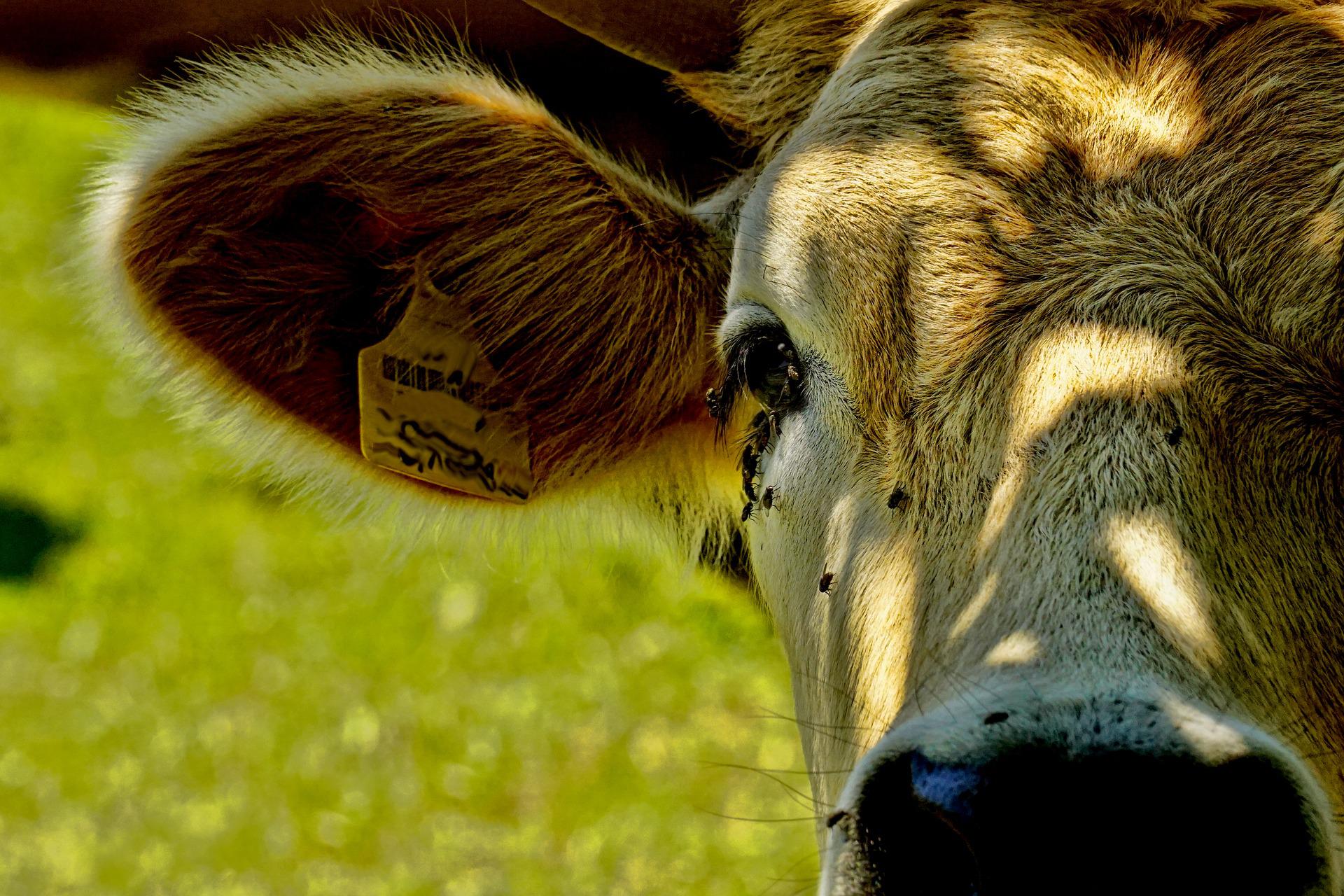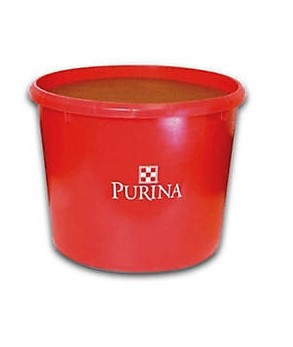
Fly Control for Cattle
Posted by Grange Co-op on 19th Jul 2022
Flies are more than a nuisance to cattle – they are a cause of disease and lost production for cattle owners. There are several species of biting flies in cattle, including stable flies, horse flies, deer flies, and horn flies. While all these species have the potential to cause disease and infection from their bites, horn flies are the most economically damaging pest of pastured cattle. Without an effective fly control plan, producers stand to lose a lot due to the negative impact these pests have on cattle.
What Are Horn Flies? 
Horn flies are small, dark gray insects that congregate along the back and sides of cattle. Both sexes have long, needle-like mouths that they use to feed on blood meals. They usually stay on the animals continuously, taking 20 or more blood meals daily. The females only leave to lay their eggs in freshly dropped manure. This is where new flies develop.
A female horn fly lays as many as 500 eggs, and the life cycle completes in 10 to 14 days. This allows them to reach their highest populations during the warmer months. By summer, there might be populations of thousands of horn flies on the herd.
The High Cost of Horn Flies
Livestock producers lose more than $1 billion each year to the horn fly. When they bite, cattle may stomp their feet, huddle together, and sometimes stand in the water. This time lost from grazing results in an estimated reduced weight gain of 0.5 lbs per day. They also reduce milk production that beef and dairy calves rely on.
The damage caused by horn fly bites also extends to hides used to make leather. It can result in poor quality and in cosmetic defects in both tanned and dyed leather.
Horn flies are also vectors for several pathogens including:
- Stephano filaria stilesi, a filarial nematode that causes a type of dermatitis represented as crusted skin on the underside of the cattle.
- Several types of Staphylococcus bacteria cause mastitis in dairy cattle.
- Bovine leukemia virus (BLV) may potentially be transmitted by horn flies
Implementing An Integrated Pest Management Plan (IPM)
There are multiple methods of fly control in cattle, each with its own benefits and limitations. One of the biggest mistakes cattle owners make is trying to control flies in their cattle with one product. The problem with this approach is that most products only target adult flies and not larvae. Another is that the flies become resistant to the same products over time.
Controlling fly populations in cattle is an important issue. Using a variety of products and knowing when to change to a new one will optimize your approach to killing flies and reducing the growth of large populations. Some of the most popular types of fly control products include:
Ear tags containing pyrethroids – Ear tags contain different types of drugs including organophosphates and pyrethrin. Flies develop resistance to the same drug when it is used year after year. Switching to a different tag/drug helps prevent flies from developing resistance.
Insect Growth Regulator (IGR) to kill larvae in manure – Pour-on fly control for cattle allows animals to deposit the product in the manure where horn flies lay their eggs. Killing flies at the larvae stage makes it easier to prevent the development of large populations.
Purina Wind and Rain Altosid Fly tub for cattle is to reduce fly populations while reducing factors that cause poor performance in cattle. The tub is highly palatable for consistent consumption. An added bonus is the weather resistant form so less product goes to waste.

Spray-on or pour-on pesticides – When using sprays and pour-ons, choose one that contains a different type of drug than your ear tags. For example, if you are using a pyrethrin tag, choose a spray with an organophosphate.
Dust bags and back rubbers – Both of these methods work early in the season before applying ear tags. One drawback is that they require a lot of maintenance. You must constantly check the positioning and refill them with pesticide. There is also the problem of flies building up resistance when the same type of pesticide is used. There is also no way to control dosage if the cattle have free access. For controlled access, the bags or back rubbers should be strategically placed such as in an entrance or exit where you direct cattle a specific number of times per day. If you prefer to let the cattle access the pesticide freely, place them at a mineral station or water trough so that the cattle rub them against their backs while passing through.
While each of these methods is effective to some degree, the best approach is to use an integrated pest management system. Taking an integrated approach with multiple types of products allows you to treat both the adults and the larvae. This should begin when you observe between 200 and 300 flies per animal.
Although horn flies are considered the most economically devastating fly to cattle production, other types of biting flies can do damage and spread disease as well. Face flies are another type of pest that lays eggs in the cattle’s manure. Some products that are used to control horn flies are also effective against other species of biting flies. A multi-faceted fly control plan combines the benefits of various products to achieve broader results.
Shop Grange Co-op for Fly Control
Grange Co-op carries a range of fly control products for cattle to help you in the everyday battle against horn flies and more. Let us help you get everything you need for an integrated pest management plan. If you have questions, contact us today, and speak with one of our Livestock GrangeExperts for more information.
